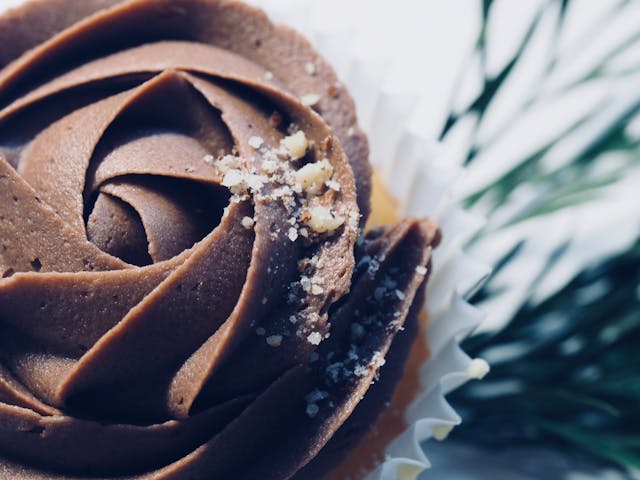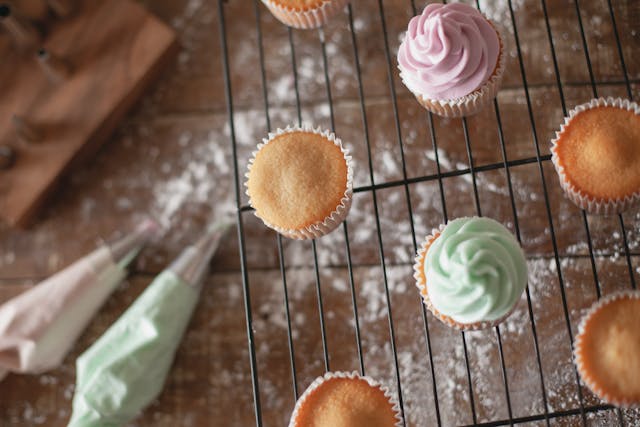- Gather chocolate chips, butter, sugar, cocoa, cream, vanilla, and salt for your fudge frosting.
- Melt chocolate, blend with butter and sugar, then customize flavor and consistency for perfect frosting.
- Smoothly apply and decorate with piping, sprinkles, and shavings for an enhanced look and texture.
Frosting plays a pivotal role in baking, transforming simple cakes and cupcakes into irresistible works of art. Among the myriad options, fudge frosting is a decadent, versatile choice that promises to elevate any dessert. However, crafting the perfect fudge frosting requires more than mixing ingredients; it demands precision and understanding. This guide is dedicated to unraveling the step-by-step process of creating the best fudge frosting recipe, ensuring your desserts are delicious and visually stunning.
Understanding Fudge Frosting
Understanding the nuances of fudge frosting is essential before embarking on your culinary adventure. This knowledge ensures a smoother preparation process and guarantees a decadent result that will impress any dessert lover.
What is fudge frosting?
Fudge frosting is a rich, chocolatey concoction that sits somewhere between a classic buttercream and a ganache. It’s known for its creamy texture and deep chocolate flavor, making it a favorite among those who appreciate a luxurious dessert topping. Unlike other frostings, a good fudge frosting recipe incorporates melted chocolate or cocoa powder, butter, and sugar to create a smooth, spreadable consistency perfect for layering cakes, swirling atop cupcakes, or even spreading cookies.
Differences between Regular Frosting and Fudge Frosting
| Aspect | Regular Frosting | Fudge Frosting |
| Texture | Light and airy | Dense and creamy |
| Flavor Profile | Sweet, often vanilla-based | Rich chocolate |
| Main Ingredients | Butter, powdered sugar | Chocolate, butter, sugar |
| Application | Fluffy and easy to spread | Thick and smooth, sets firmly |
Fudge frosting sets itself apart with its dense, creamy texture and intense chocolate flavor. Its unique characteristics make it a beloved choice for those looking to add a touch of elegance and indulgence to their baked goods.
Why Fudge Frosting is Loved by Many
The allure of fudge frosting lies in its irresistible combination of rich flavor and luxurious texture. Chocolate enthusiasts gravitate towards this frosting for its ability to deliver a potent cocoa experience unmatched by other types. Its versatility also plays a key role; whether it’s enhancing the chocolatey goodness of a devil’s food cake or adding a contrasting richness to a vanilla sponge, fudge frosting adapts beautifully, making it a staple in the repertoire of home bakers and professional pastry chefs alike.
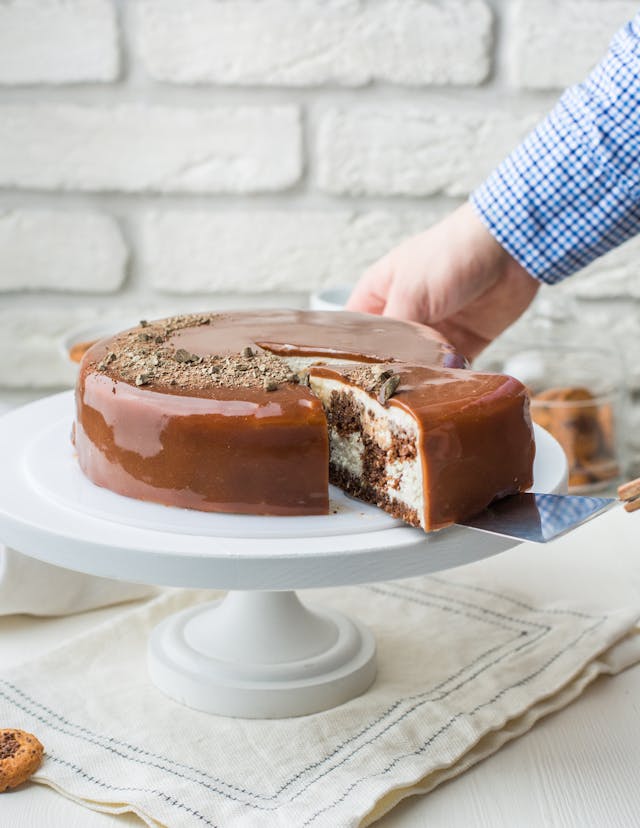
Ingredients You’ll Need
Making the best fudge frosting recipe begins with assembling the right ingredients. Each component plays a pivotal role in achieving the desired texture and flavor profile.
- 1 cup semi-sweet chocolate chips (for melting)
- 1/2 cup unsalted butter (for richness)
- 3 cups powdered sugar (for sweetness and structure)
- 1/2 cup cocoa powder (for depth of chocolate flavor)
- 3-4 tablespoons heavy cream (for creaminess)
- 1 teaspoon vanilla extract (for flavor enhancement)
- Pinch of salt (to balance sweetness)
Step-by-Step Preparation
Embarking on the fudge frosting preparation process is an exciting adventure that promises delicious results.
Preparation Phase
The initial step in crafting the perfect fudge frosting involves meticulous preparation of your kitchen workspace and carefully selecting utensils and equipment. A clean, organized kitchen is paramount for a seamless baking experience. Begin by ensuring that all surfaces are clean and spacious enough to accommodate your ingredients and tools. This not only aids in maintaining hygiene but also enhances efficiency and reduces the likelihood of errors during the preparation process.
Gathering the right utensils and equipment is crucial. You will need a double boiler or a microwave-safe bowl for melting chocolate, a medium-sized mixing bowl, an electric mixer or a whisk, measuring cups and spoons, a spatula, and a cooking thermometer. Each tool plays a specific role in the creation of fudge frosting, from precisely measuring ingredients to ensuring they are mixed to the right consistency.
Making the Base
Melting Chocolate: Melting chocolate is a fundamental step in creating a fudge frosting base that’s both smooth and rich. The key to perfectly melted chocolate is gentle heat. Double boiling is preferred when chocolate is placed in a bowl that sits over simmering water, ensuring it never comes into direct contact with heat. Stir constantly to prevent the chocolate from scorching. A microwave can also be used cautiously; heat the chocolate in short bursts of 20 seconds, stirring in between, until smooth. Avoid water contact with chocolate as it can seize, turning the mixture grainy.
Incorporating Butter and Sugar: Once the chocolate has melted, incorporating butter adds richness, while sugar brings sweetness and structure to the frosting. Add softened butter to the warm chocolate, allowing it to melt seamlessly, and gradually mix in powdered sugar. This process requires patience; mix until there are no lumps, and the mixture is smooth. The right consistency is vital—it should be thick enough to hold shape but still soft enough to spread.
Balancing Sweetness and Richness: Achieving the perfect balance of sweetness and richness is essential. If the frosting is too sweet, a pinch of salt or additional cocoa powder can temper the sweetness. Conversely, more powdered sugar can lighten the flavor if it’s too rich. Taste as you go and adjust accordingly, remembering the flavors will develop further once the frosting sets.
Adding Cream and Flavorings

Incorporating Heavy Cream: Heavy cream is the ingredient that transforms the texture of your frosting from good to heavenly. Adding it to the chocolate mixture makes the frosting luxuriously smooth and creamy. Start with a small amount, then gradually add more until the desired consistency is achieved. It’s crucial to add the cream slowly and mix well to prevent the frosting from becoming too liquid.
Flavor Enhancements: Flavor enhancements like vanilla extract, a splash of espresso, or liqueurs can significantly elevate the frosting’s taste. Vanilla adds a warm, floral note that complements the chocolate beautifully, while espresso deepens the chocolate flavor, making it more pronounced. Add these flavorings sparingly; even a tiny amount can have a significant impact.
Mixing and Blending for a Uniform Texture: After adding the cream and flavorings, thorough mixing is crucial. Use a whisk or an electric mixer to blend the ingredients until the texture is uniform and silky. This step ensures that all the components are perfectly integrated, resulting in a smooth, homogenous frosting.
Final Touches
Cooling the Frosting to the Perfect Consistency: Cooling the frosting is a delicate balance; it needs to be firm enough to hold its shape yet soft enough to spread smoothly. Allow the frosting to cool at room temperature for a bit before chilling it in the refrigerator for a short period. Stir occasionally to prevent it from setting unevenly.
Beating to Achieve Desired Fluffiness: Once the frosting has cooled to the desired consistency, beating it will introduce air, making it lighter and fluffier. Use an electric mixer to beat the frosting on a high setting for a few minutes. This process improves the frosting’s texture, making it more workable and giving it a luxurious mouthfeel.
Checking for Proper Spreadability: The final step is to ensure the frosting is at the perfect spreadability for your cake or cupcakes. It should be smooth and easy to spread without tearing the cake. If it’s too thick, a little more cream can soften it; if it is too soft, chilling it for a bit longer can firm it up. Always do a small test on a piece of parchment paper or the edge of the cake to ensure it’s the right consistency.
Decorating Tips and Tricks
Decorating desserts with fudge frosting not only enhances their visual appeal but also adds a layer of texture and flavor that can elevate the overall experience. Mastering the art of application and decoration with fudge frosting requires a combination of the proper techniques and a touch of creativity.
How to Apply the Frosting Smoothly on Cakes and Cupcakes
Applying fudge frosting smoothly is the foundation of cake and cupcake decoration. Start by ensuring your cake or cupcakes are completely cooled; any warmth can cause the frosting to melt. Using an offset spatula for cakes or a knife for cupcakes, apply a dollop of frosting on top. For cakes, work the frosting from the top down the sides in a smooth, even layer, spinning the cake turntable as you go. For cupcakes, a swirling motion from the center outwards creates a simple yet elegant finish. If aiming for a super smooth surface, dip your spatula in hot water, dry it, and then gently run it over the frosting for a flawless finish.
Techniques for Piping and Creating Decorative Patterns
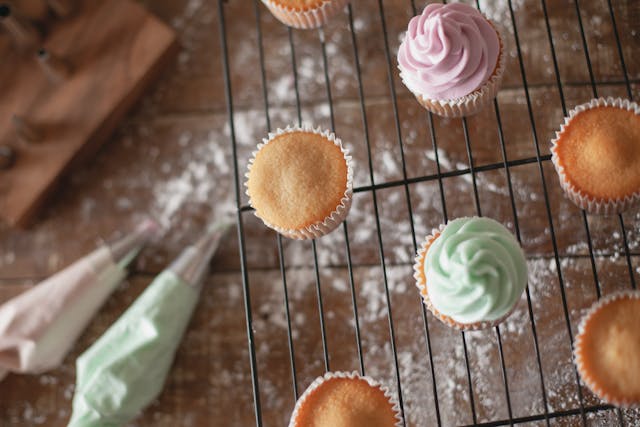
Piping is a versatile technique for applying fudge frosting that allows for a range of decorative patterns:
- Stars and Rosettes: Using a star tip, you can create stunning rosettes or stars by applying pressure to the piping bag and releasing it as you pull away.
- Writing and Lines: A round tip is perfect for writing messages or creating intricate lines and shapes.
- Leaves and Petals: With leaf and petal tips, you can craft flowers or foliage for a more elaborate decoration.
Experiment with different piping tips to find the patterns and designs that best suit your style. Practice on parchment paper before applying directly to your dessert.
Adding Embellishments Like Sprinkles, Chocolate Shavings, or Nuts
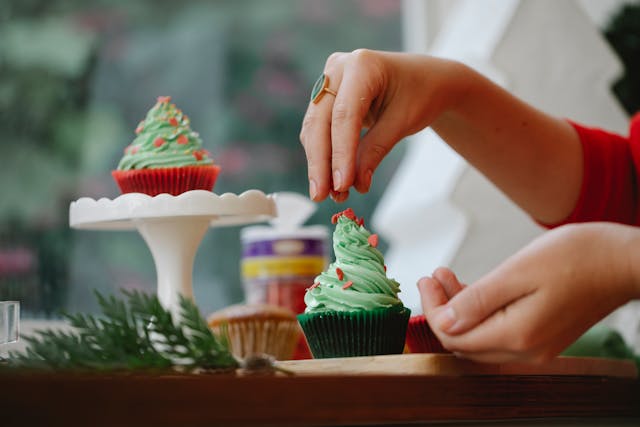
Embellishing your desserts with items like sprinkles, chocolate shavings, or nuts is a creative way to enhance their visual appeal and texture. Sprinkles bring a vibrant burst of color and a playful texture that can make your treats stand out. For a deeper chocolate flavor and a touch of elegance, chocolate shavings are an excellent choice; they meld beautifully with the fudge frosting, enriching its chocolatey essence. Nuts, on the other hand, introduce a delightful crunch and a refined appearance.
To ensure these additions complement your dessert, align them with its overall theme and color palette. It’s best to sprinkle these embellishments over the frosting while it’s fresh and yet hardened, ensuring they stick correctly and are evenly distributed. This step not only secures them in place but also integrates them seamlessly into the design, making your dessert a feast for both the eyes and the palate.
Wrapping Up
In conclusion, crafting heavenly fudge frosting and applying it with finesse can transform simple baked goods into extraordinary delights. From mastering the base to adding final embellishments, each step is an opportunity to infuse creativity and flavor. Embrace these techniques and tips to elevate your desserts, ensuring they’re as visually appealing as they are delicious.
Frequently Asked Questions
Can I use different types of chocolate for fudge frosting?
Yes, you can use various chocolate types—dark, milk, or white—each imparting a unique flavor and richness to the frosting, tailored to your taste preference.
How long can I store fudge frosting?
Fudge frosting can be stored in an airtight container in the refrigerator for up to a week or frozen for three months. Thaw overnight in the fridge before use.
Can I make fudge frosting without butter?
Yes, for a dairy-free option, you can substitute butter with coconut oil or vegan butter alternatives, adjusting the quantity to achieve the desired consistency.
Can I use fudge frosting to fill in layer cakes?
Absolutely. Fudge frosting’s rich texture makes it an ideal filling for layer cakes, adding a luxurious chocolate layer between cake tiers.
How can I adjust the consistency of fudge frosting if it’s too thick or thin?
For thick frosting, add a bit more cream or milk, stirring well. If it is too thin, gradually mix in small amounts of powdered sugar until the desired consistency is reached.
People Also Ask
Can you freeze fudge frosting?
Yes, fudge frosting freezes well. Store it in an airtight container for up to 3 months. Thaw in the refrigerator overnight before using.
How do you fix runny fudge frosting?
To thicken the runny fudge frosting, gradually add more powdered sugar or cocoa powder until the desired consistency is achieved.
What cakes pair well with fudge frosting?
Fudge frosting pairs beautifully with chocolate, vanilla, red velvet, and espresso cakes, enhancing their flavors with its rich texture.
Can I make vegan fudge frosting?
Absolutely. For vegan fudge frosting, use dairy-free chocolate and substitute butter with vegan butter or coconut oil and cream with a plant-based alternative.
